Clare Woods’ Lockdown Paintings
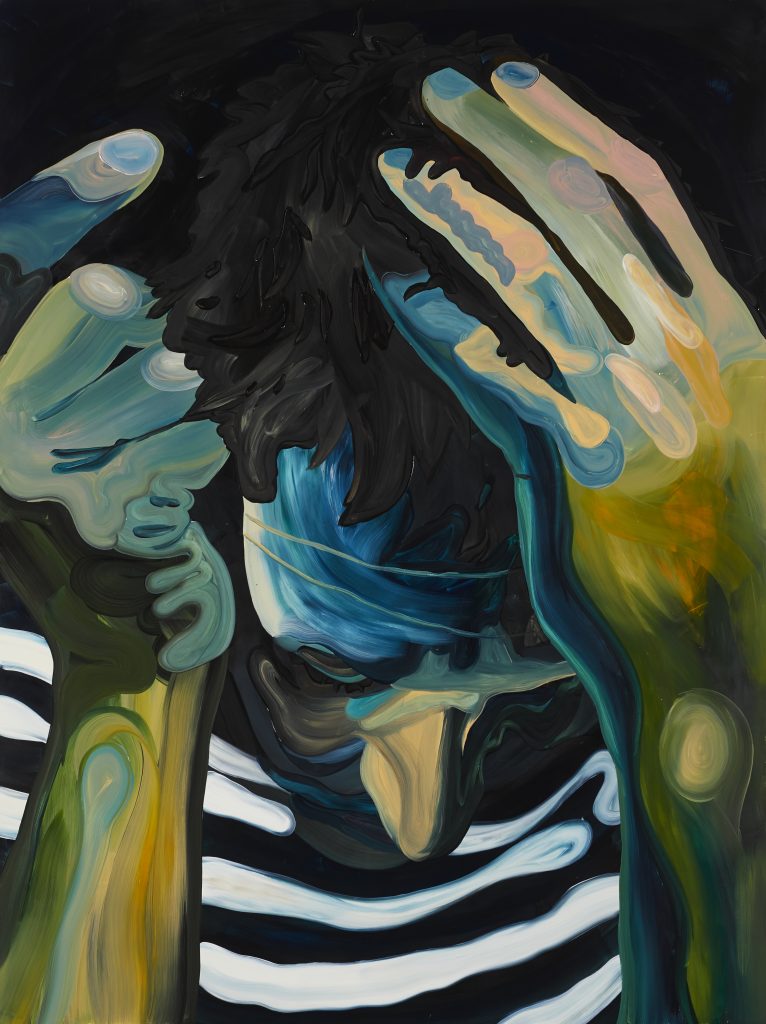
The COVID-19 pandemic has been tumultuous and anxiety-ridden for the great majority of the creative world. But for Clare Woods, it has proven to be an extraordinary catalyst. A series of interior paintings created during the lockdown in Great Britain are among the most evocative and dynamic in her oeuvre: pulsating colours and ribbons of intense light are laid out over sheets of aluminium, reflecting buried tensions tinged with passionate rebellion.
Clare Woods was born in 1972 in Southampton, and received her BA in Fine Art at the Bath College of Art (Bath, UK) and her MA in Fine Art at Goldsmith’s College, London. Initially trained as a sculptor, Woods’ practice shifted (almost beyond her own notice) into painting still life and traditional landscapes from preexisting photography.
From our Winter 2021 Issue: FRONTRUNNER spoke with Woods about the evolution of her work, what the future of landscape painting may look like, and why it was a relief not to have become a banker or a hairdresser. She is represented by Simon Lee Gallery (London/New York/Hong Kong), Buchmann Galerie (Berlin), and Martin Asbæk Gallery (Copenhagen).

If Not Now Then When (2020)
Oil on Aluminium
200 cm x 100 cm
Courtesy of the artist and Simon Lee Gallery (London/Hong Kong)
and Buchmann Galerie (Berlin)
You initially trained as a sculptor. What changed when?
I did a BA in Sculpture which I left in 1994, and I think it fundamentally taught me how to look and see. Unfortunately, I was not very good at sculpture. I was very practical and could physically make the object I wanted to make, but I found the endless possibilities of materials debilitating at times, and naturally started to limit my use of materials until I was using just MDF and gloss paint. I was making objects and painting them, which allowed a seamless transition into painting. I did not even notice I was making paintings as I still saw them as painted objects. The shiny surface made the viewer move around them, as if looking at a 3-D object, not the flat surface of a painting. The scale and weight of the structure that I used to paint on felt like a sculpture. I was using exactly the same practical skills to make these surfaces as I was to make the sculpture. Then, one day (around the year 2000), I was having a studio visit and they called me a painter. I was like, “Hang on, there…” But it was true. I was a painter. I had become a painter and did not really notice.
Tell me about your interest in landscape painting. What is a British landscape to you? What does that look like and what does it mean?
I grew up on a council estate in a village surrounded on two sides by water; I could see the Isle of Wight from my parents’ bedroom, and at night could hear the fog horns and the ships coming from Southampton Water into the Solent. I think I was aware very early on of my surroundings and what physically trapped me. When I lived in London, I felt a yearning for landscape, to see where I was, and to be able to work out the lay of the land around me. This was when I started to leave London to find these areas, and it took me to the Welsh borders, where I took photographs to paint from.\n\nI spent a lot of my late twenties travelling around the UK photographing the various landscapes and feeling the regional differences. But there is a collective feeling of the British landscape which is green, wet, scary, and a bit down on its luck. I also spent a lot of time looking at First World War artists Nash, Sutherland, Piper and visiting the landscapes they painted during times of unrest. I guess I was interested to try and see what they were seeing. I personally, slightly fear the countryside and I have never felt comfortable there or in the city, but for very different reasons. I am kind of stuck between not wanting to be in the city, but not able to be in the countryside, maybe scared of both. Landscape, for me, held all of these anxieties and extremes which I was able to paint out.
Landscape painting, as a genre, seems pegged to the past: a wistful nostalgia that few artists choose to approach now; in lieu of Instagram snaps and instant messages simply saying, “I’ve been there.” Could the genre be revived in a meaningful, contemporary way?
Landscape has always played a role in the creation of national identities and during times of national unrest, there is a return to landscape. This can be seen during both the First and Second world wars. Maybe there is a comfort in the landscape, or maybe a need for something real, solid, and bigger than us. I will be interested to see if there is a knock-on effect to the relevance of landscape in contemporary practice now, but just looking at my Instagram, there is a definite increase in landscape and plant/flower images. Maybe this is where people are looking right now.
Your interior works began as a result of the COVID-19 lockdown, and you’ve talked about how it’s created a more insular, intimate space for you to explore your work. Conversely, has there been anything negative or detrimental to your practice because of the lockdown?
I had started to paint still life with a nod to interior in the background, but it was the lockdown that fully threw me into painting the interior. It was not a conscious decision, and it was only when lockdown had been eased [that] I realised I have a studio full of paintings of rugs, windows, lights, plants on window ledges and walls that interiors were fully integrated into my practice. It was an intense period of painting and escape: escape physically from two children home-schooling and an escape from the reality of what was happening not just in this country, but globally.
The studio became the safe place, and it was such a privilege to be able to work in an intense and focused way where many others could not. But I have really missed the conversations, the travel, and the looking at the real. I feel now, more so than ever, there is a desire for the real experience, to walk into a museum or gallery and see a real painting on the wall. For real, proper human interaction and discussion that Zoom cannot quite offer. The flip-side of the solitary existence in the studio has always been the more social side of the art world and the lack of this human contact and discussion – this is what I am struggling with now as we’ve entered a second lockdown.
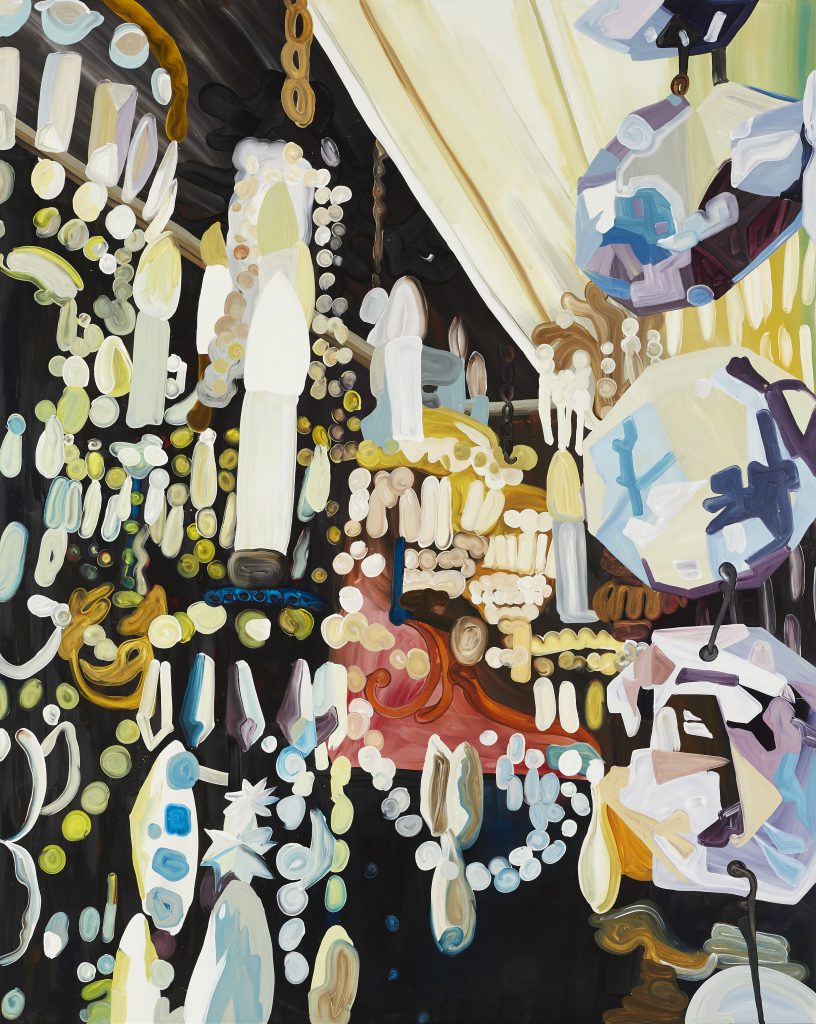
Double Difficult (2020)
Oil on Aluminium
250 cm x 200 cm
Courtesy of the artist and Simon Lee Gallery (London/Hong Kong)
and Buchmann Galerie (Berlin)
What is the best piece of advice you’ve ever received? The worst?
Work hard, be realistic, but aim high. The advice my first year tutor gave us when were were in our first day of our BA was: always photograph your work properly, get a good accountant, and don’t marry an artist. Two of which I have followed by the book.
The worst piece of advice was probably from my mother just after I had finished my A levels, who said I should not go to art college and I should think about working in a bank or becoming a hairdresser. I was rubbish at maths and I am not good with the general public, so it would have been a disaster, either way.
On a larger scale, what do you think the greatest lesson is for artists and creative individuals experiecing the pandemic? What should we take away from it?
It’s very hard because everyone works in such a different way. I have friends who are totally debilitated by the situation and the anxiety it has caused on so many levels. I am very lucky as I have been able to use the time to get my head down and just paint, which is a total luxury. I can’t speak for other people, as it is such a personal thing, but the current situation has made a lot of things much clearer for me, what’s really important, who is really important. There has been a lot of tidying up of the stuff around the edges, and I feel my whole practice is much tighter. Being an artist or creative, you will already know what it is to work against the tide. We are kind of equipped to adapt to difficult situations.
A more fun question: what are seven things in your studio you could never do without?
Paint, paintbrushes, white spirits, masking tape, pencil, scalpel, old tins, rags, and as long as I have these things and something to paint on, I am fine.
Who are you looking at now? Which artists (living or dead, old or young) are piquing your interest?
Where do I start? Barbara Hepworth, Louise Bourgeois, Alice Neel, Georg Baselitz, Rodin, Munch, Manet, Marlene Dumas, Wolfgang Tillmans, Goya, Luc Tuymans, Elizabeth Peyton. I could go on. A funny old mix, though.
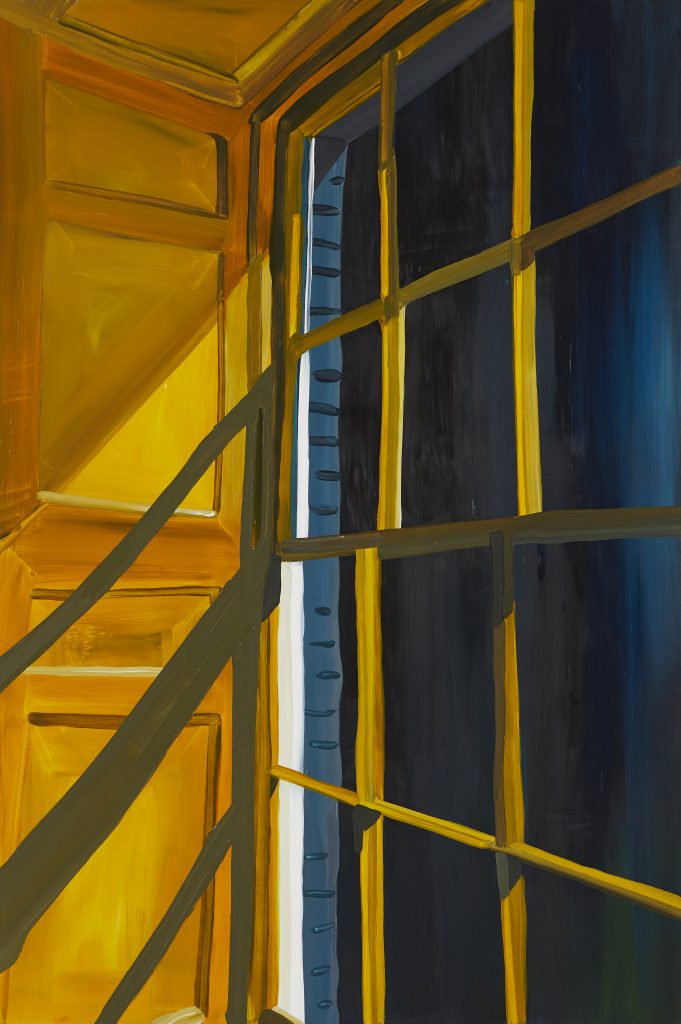
I Had Some Time Alone (2020)
Oil on Aluminium
150 cm x 100 cm
Courtesy of the artist and Simon Lee Gallery (London/Hong Kong)
and Buchmann Galerie (Berlin)



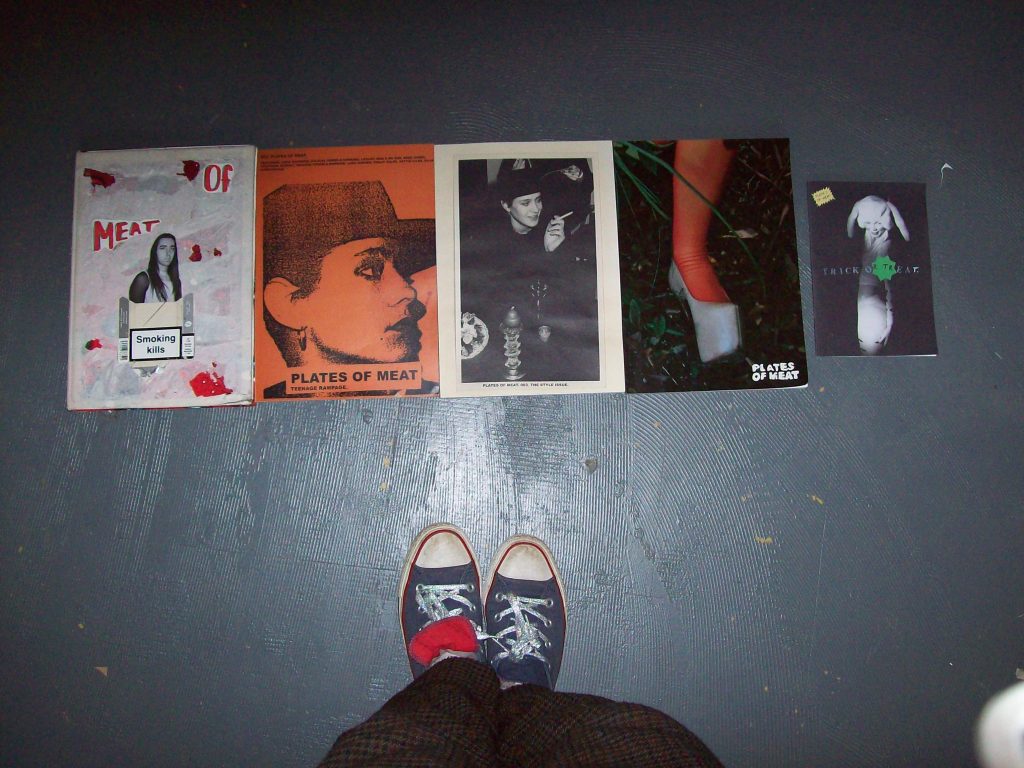
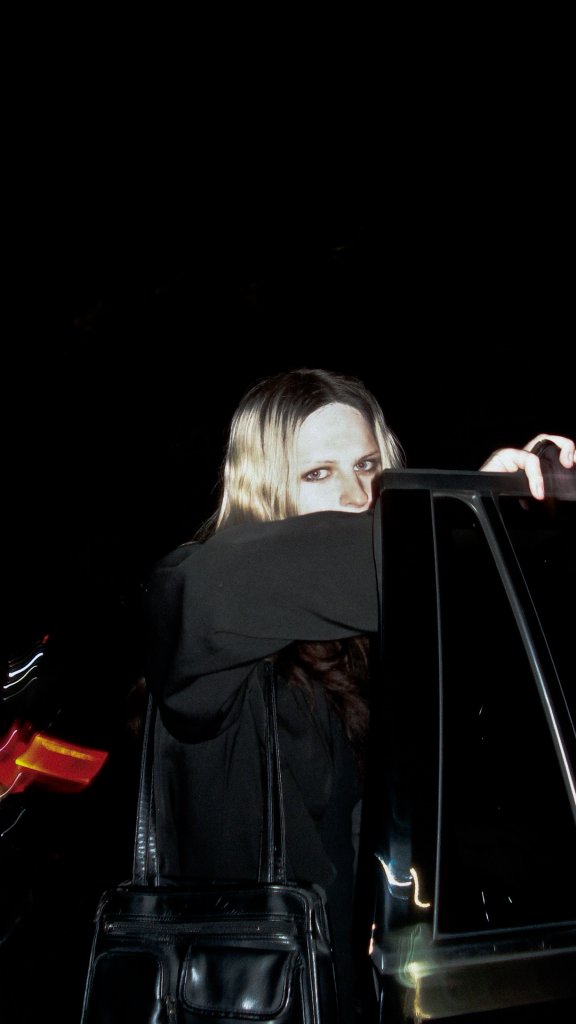

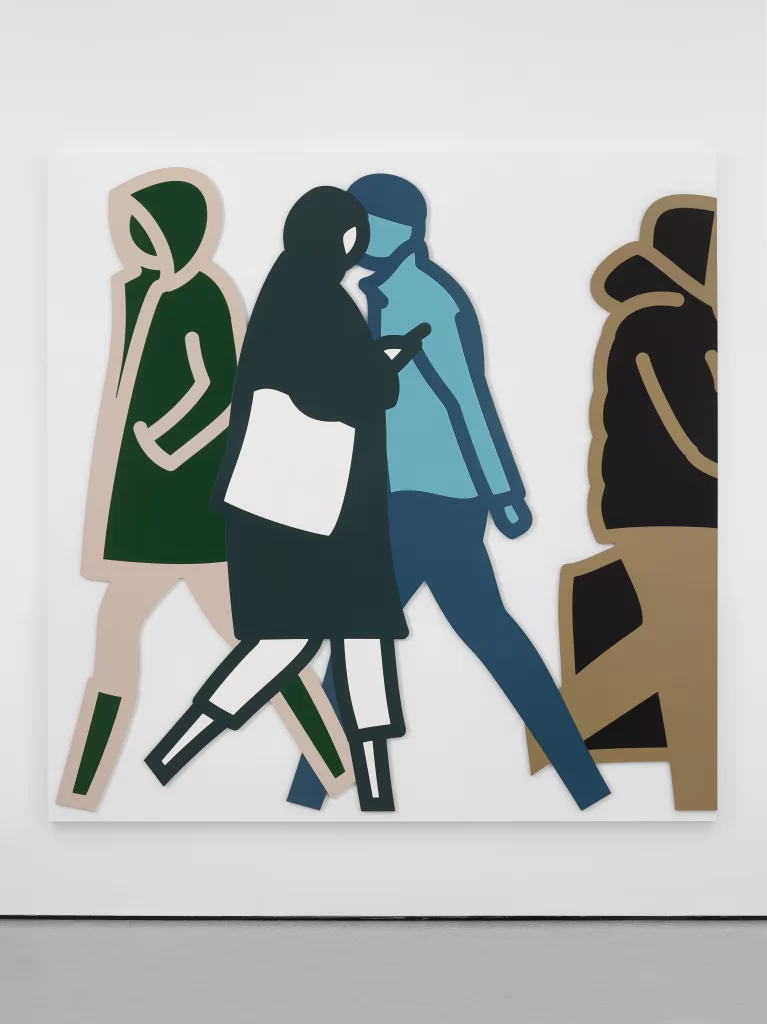
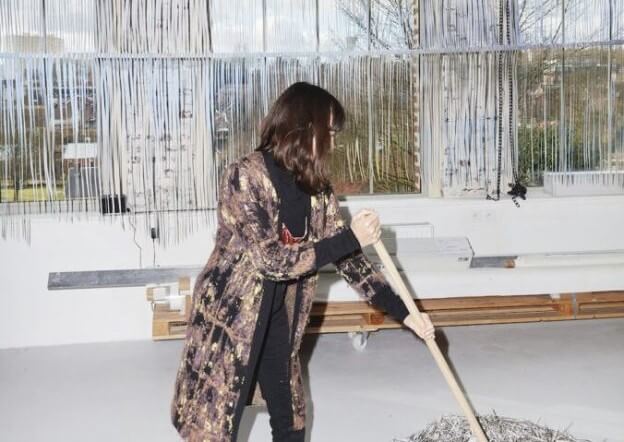
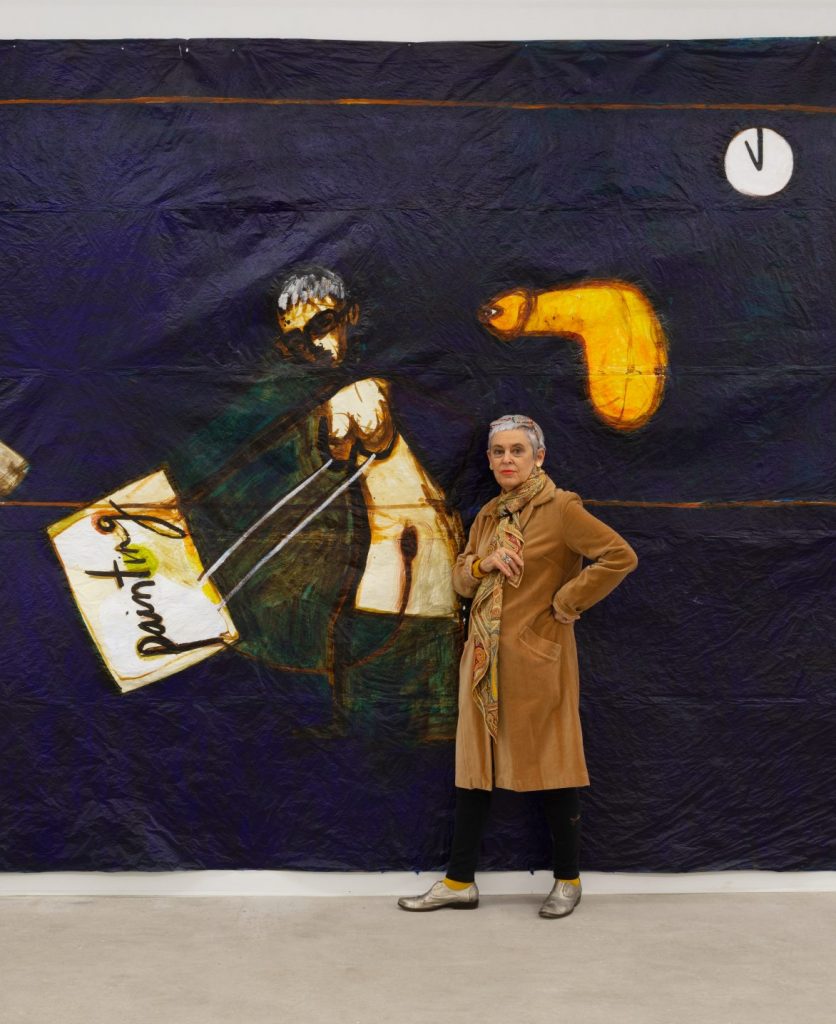


Responses